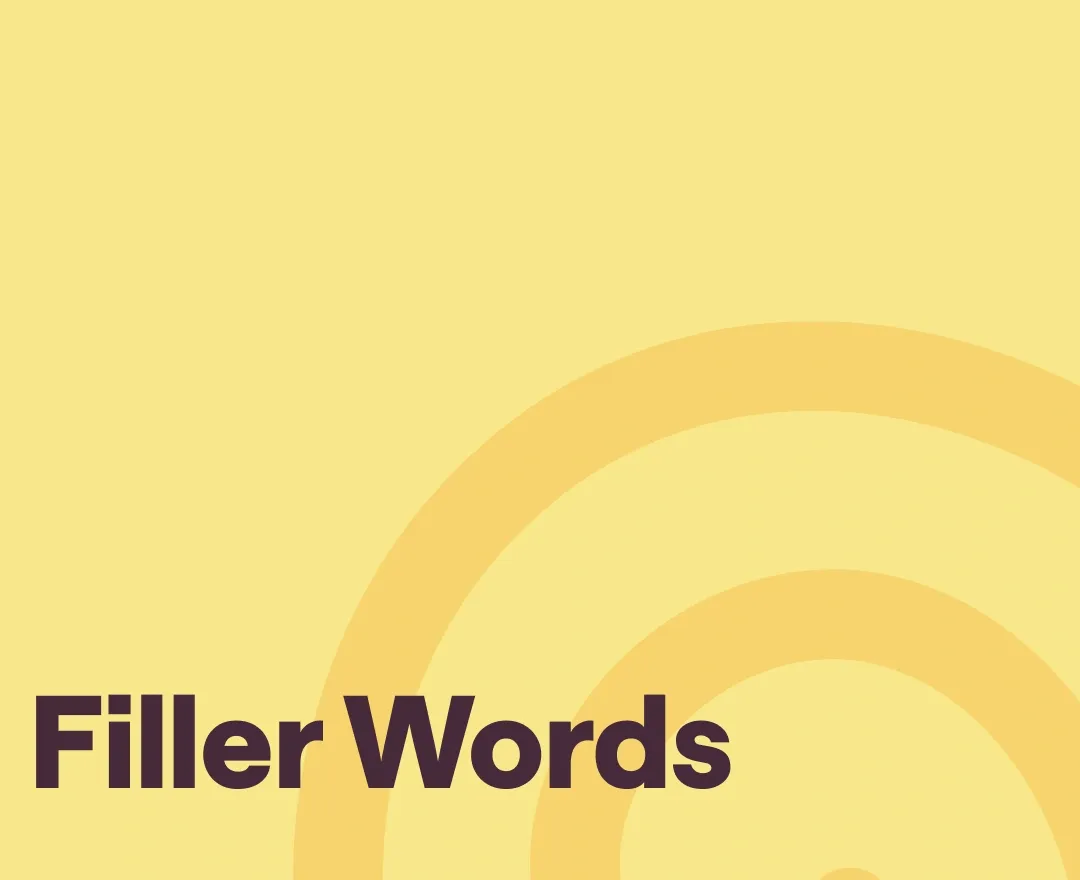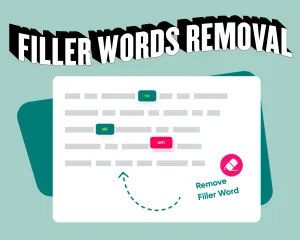We all know that feeling of dread when we hear our voice played back to us. Those cringe-worthy filler words like "um," "like," and "you know." It can be tough to remove them from your speech - but it's possible! With a bit of practice and a secret weapon, you'll be able to remove those pesky filler words in seconds! To help you eliminate unnecessary headaches, we have created a comprehensive guide on how to remove filler words from texts and transcriptions.
Filler Words: What They Are and Why You Should Avoid Them
In our previous article touching on filler words, we discussed the idea behind them and why people use pauses in their speech.
In brief, filler words (also called discourse markers, crutch words, etc.) are the vocal pauses or words we use between phrases to break up a sentence. They are usually used to fill the space between words or phrases. However, most people use them as an extra opportunity to organize their thoughts while speaking. Although filler words can be practical, they can become distracting when used too often.
Moreover, if you're podcasting or recording a video for your business, filler words can make your content sound sloppy and unprofessional. That's why you should remove filler words from recordings and transcriptions to ensure the best listening experience for your audience.
To help you remove those dreaded phrases, today's article will mainly focus on removal techniques for recordings and transcriptions. The most dedicated readers will get a professional solution from niche experts in the form of an AI-powered tool.
Remove Filler Words From Text Manually
Step One: Listen to Your Recordings
The first step to removing filler words from your recording is to listen to yourself. It's essential to be aware of the patterns in your speech to remove the words that sound unnatural. Patterns include words and phrases you use the most often. Also, there are the natural pauses, the tone of your voice, and the time it takes for you to speak.
Once you become more aware of your language, identifying and removing unnecessarily used discourse markers will be much easier.
Step Two: Identify Filler Words
Uuum, uuuh, eeer, aaah.
The longer you listen to your recording, the more filler words you'll be able to identify. After taking note of which ones are used more often, it's time to remove them.
However, don't be too heavy on yourself. A few filler words per minute won't get noticed compared to the rest of your content. Also, not every filler word is destined to be cut. Natural pauses and phrases like "well, like, so, right, okay, etc." serve as bridges between thoughts and make your content easier to follow.
Step Three: Find Replacements for Filler Words
Once you know which filler words need to be removed, find their replacements. Start with simple words like "yes," "no," and "exactly." Then move on to more descriptive words such as "consequently," "accordingly," or "therefore." As an alternative, try replacing filler words with short pauses to take a breath.
Step Four: Make It Perfect
Now that you've identified the filler words and replaced them with better alternatives, continue with your updated text or transcription. Read it aloud to make sure your content sounds as polished and professional as possible. If something still feels off, remove the replacement and try to find an appropriate alternative.
AI-Powered Tools for Filler Word Removal 101
Although knowing how to remove filler words from texts manually is a valuable skill, it still requires lots of free time and a sharp eye for detail. Thus, if manual editing doesn't sound appealing, don't worry— technology has the solution.
AI-powered tools use Natural Language Processing (NLP) algorithms to automatically remove filler words from text or transcription. Tools with built-in artificial intelligence allow you to remove unwanted words with a single click.
The system uses complex programming rules to identify and remove filler words.
Besides detecting and removing features, the more advanced platforms have additional functionality. By additional, we mean:
Transcribing audio files in minutes: Converting speech to text is a great way to see all the filler words you've used. This way, detecting and highlighting those words will be much easier.
Revoicing and cloning: Advanced software solutions have gone far beyond merely replacing words. With a trustworthy platform, you can replace the filler words with a voice of your choice or clone yourself, allowing AI to sound like you.
And more!
Luckily for you, Podcastle offers a complete package of all the features described above! With its innovative filler word detection and removal tool, everyone, even amateur podcasters, can remove unwanted words and make their content sound professional.
If that sounds appealing, here's a more detailed step-by-step explanation of how Podcastle can help you automate the task.
Here's How to Remove Filler Words From Text with Podcastle
Before we begin our detailed tour, ensure you have an existing account on the platform.
Sign up if you don't have one.
Step One: Upload your audio file
Go to the Dashboard and choose one of the available options to begin a new project.
Click the "Upload" button to add an already-recorded audio file for transcription.
Pro Tip: Podcastle has its own professional recording studio for quality sound.
Step Two: Transcribe the audio
Once your audio file is uploaded, right-click on it and toggle "Detect filler words" ON. The system cannot detect filler words without this step.
Step Three: Enable Filler Word Detection
Click "Transcribe" and see how the AI automatically highlights unwanted words. Don't remove them yet!
Step Four: Edit Filler Words
Make sure to review the highlighted words and remove only those that are completely unnecessary. Once you decided whether to ignore or delete the highlighted words, Podcastle will handle the rest.
The software uses AI-based features to smoothen any potential irregularities in your recording. Its Magic Dust and Silence Remover features remove and adjust any sudden shifts in the audio to make it sound natural and pleasant.
Conclusion
Filler words are natural but can take away from the quality of your content. If you want to remove them from your text or transcription, you have two options— remove them manually, or use an AI-powered tool.
Manual editing requires time and dedication, while AI-powered tools make the process automatic.
Now that you know how contemporary AI can meet all your podcasting needs, it's time to check what Podcastle has for you. The platform delivers accurate results in very little time, regardless of the amount and complexity of your content.
Try it now to remove filler words from recordings and transcriptions in an instant!
Download the iOS application or access it via the web today!







